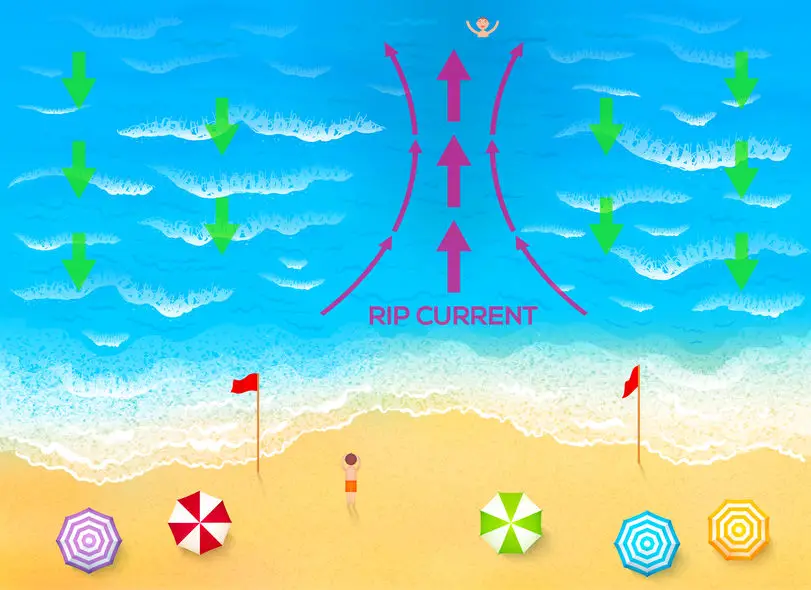It’s summertime again and there is nothing better than a day at the beach but there is a hidden danger that reveals itself every year. It claims the lives of over a hundred beachgoers a year and is rarely talked about. it’s called Rip Current. You can identify them if you know what to look for and you can deal with them if you know what to do. How Do You Get Out Of a Rip Current?
To get out of a rip current:
- Stay calm
- Don’t fight the current- save your energy
- Do NOT try to swim directly to shore- instead swim parallel to the shore
- Once out swim diagonally toward shore
- Float if tired or overwhelmed
- Hold hands up & Wave to Signal for help
- Conserve energy
- Follow lifeguard instructions
Rip Current accounts for more than 80% of all Lifeguard rescues. There are ways to recognize them and a few ways of what you can do if you get caught in one. Learn the history of the beach and whether there have been problems with Rip Currents before.
How Do You Get Out of a Rip Current
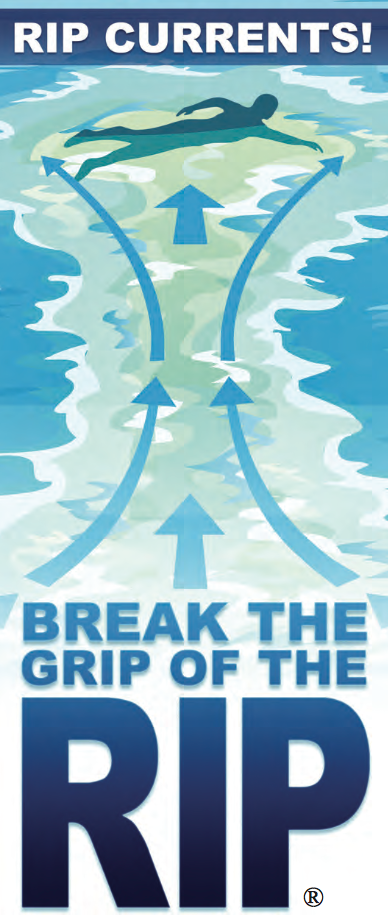
A Rip Tide is a strong current on the surface of the ocean that flows away from the shore. Different factors can cause a Rip Current to form. If wave heights change too rapidly a Rip Current will appear. What people don’t realize is this type of current can show up near piers, boating docks, and shallow water.
A Rip Tide, or riptide, is a strong, offshore current that is caused by the tide pulling water through an inlet along a barrier beach, at a lagoon, or inland marina where tidewater flows steadily out to sea during ebb tide. It is a strong tidal flow of water within estuaries and other enclosed tidal areas.
Rip Currents happen along the East, West, and Gulf Coast and can even occur along the Great Lakes. It happens when a powerful narrow channel of fast-moving water sometimes as fast as 8 feet per/ second is formed and moves out to sea.
Rip Currents are confused with Rip Tides. The Rip Current starts in the surf zone and moves quickly out. A Rip Current can be 50 -100 ft. wide and can extend 100-300 yards or offshore. Big waves are not needed for this phenomenon to occur, all that’s needed is 2 or 3 feet of height. They can be very dangerous and hard to forecast.
Getting out of a rip current can be a scary experience, but it’s important to stay calm and follow these steps:
- Don’t Panic: Rip currents can be strong, but they won’t pull you under. Panicking can lead to exhaustion and poor decision-making.
- Don’t Fight the Current Directly: Instead of trying to swim against the rip current, swim parallel to the shore. Rip currents are typically narrow, so swimming parallel to the shore helps you escape its pull.
- Swim Diagonally: Once you’re out of the rip current, start swimming diagonally towards the shore. This helps you conserve energy and avoid getting caught in the current again.
- Float or Signal for Help if Needed: If you’re unable to swim out of the rip current, conserve your energy by floating on your back and signal for help by waving your arms and calling for assistance.
- Stay Calm and Conserved Energy: Throughout the process, it’s crucial to stay calm and conserve your energy. If you start to feel tired or overwhelmed, try to float on your back and catch your breath before attempting to swim again.
Remember, rip currents can occur in any body of water with breaking waves, including oceans, lakes, and rivers. It’s essential to educate yourself about rip currents and always swim at beaches with lifeguards present.
Also, Rip Currents don’t need bad weather days normally they happen on really nice days following a storm. They can form at any time but will mostly come at low tide. Rip Currents mostly are created where sandbars form near the shore. They occur at breaks or channels in the bar where water is returning out to sea. The current moves in a big circle.
This happens near the beach. These Rips can become very strong and stay in one place for weeks and even all summer long. They are often difficult to notice but the main ingredient in a Rip Current is breaking waves. If there are no breaking waves then there are no Rip Currents in the area. Another sign is where there is foam, seaweed, or discolored water being pulled offshore.
How Far Can a Rip Current Take You
How dangerous a Rip can be is determined by the weather tides and the shape of the beach. Rip Currents can pick up speed in a short amount of time. A lot of beachgoers can be caught up in a Rip in shallow water, in only waist-deep surf. It can knock you off your feet and drag you out to deeper water. Rip Currents can generally take you from 100 to 130 feet out to sea before they circle or stop. If you don’t panic and float you will generally to most research studies, float out of it.
If you can’t swim it might not end up too good for you. Other misconceptions are that Rip Currents pull you underwater or that they can carry you miles out in the sea. They won’t for most instances your chances are very good for survival if you don’t panic!
Rips will carry you out but not down underwater. In most cases, Rip Currents move in circles. If you’re in shallow water and you get knocked off your feet most likely the Rip will pick you up and bring you out to deeper water then back into shallow water near the beach where it knocked you down. The whole solution is not to panic.
A Rip Current won’t drown you, it will simply carry you off and in most cases drop you back off around an area where it picked you up. Rip Currents typically flow at about 0.5 meters per second (1–2 feet per second), but they can be as fast as 2.5 meters per second (8 feet per second), which is faster than any human can swim. Rip currents carry people away from the shore. Not underwater. Rip currents are surface currents, not undertows. An undertow is a short-lived, sub-surface surge of water associated with wave action.
How to Identify a Rip Current From the Beach
To identify Rip Currents first, know the history of the beach. If the beach has a history of Rips then the beach should be posted with signs. Make sure that there is a Lifeguard on duty or don’t go in. By the way, lifeguards should know the history of the beach and Rip Currents in the area. Always let a Lifeguard on duty make a rescue.
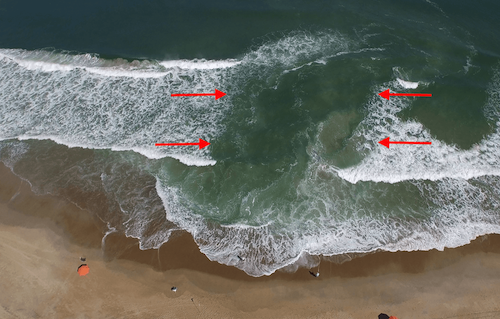
Identifying a rip current from the beach requires keen observation. Look for areas where waves aren’t breaking, as rip currents often form in channels between breaking waves. Additionally, watch for discolored or choppier water, indicating a rip current pulling water away from the shore.
Pay attention to floating debris or foam being pulled seaward, as this can also indicate the presence of a rip current. It’s essential to stay informed about local beach conditions and signs posted by lifeguards indicating areas with rip currents. Remember to always swim in designated swimming areas and avoid areas where rip currents are present.
It’s easier to see a Rip Current from higher up especially from the dunes overlooking the beach or the lifeguard tower. If you know what to look out for then you can deal with it or not deal with it.
They’re usually strongest near low tide but can form at any time as long as there are waves in the ingredients. If there are no waves there won’t be a Rip Current in the water
- Lookout from a high point at low tide for breaks or channels in a sandbar for foaming, seaweed, or discolored water being pulled offshore.
- Rip currents often form where sand bars are near the shore.
- They occur at breaks or channels in the sand bar.
- To identify Rip Currents first, know the history of the beach
- Look for a color change. It could be a deeper darker shade compared to the rest of the water around it.
- Rip Currents can also be created out of the blue. All that is needed is two waves crashing into each other from different directions and boom, you got yourself a Rip Current.
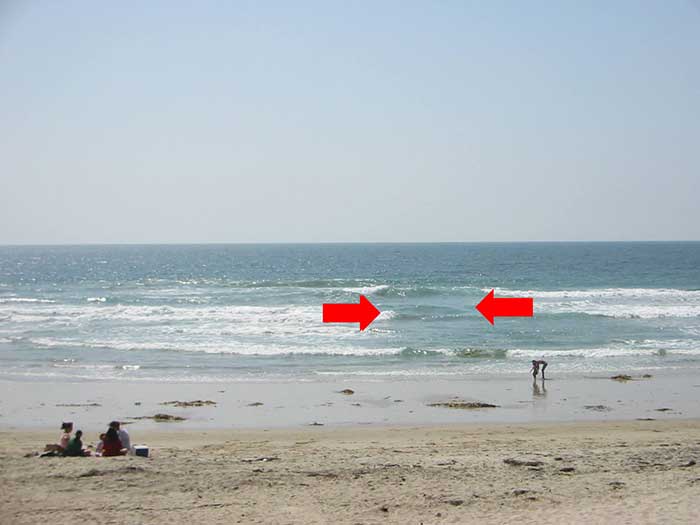
Danger! Rip Current
If you study the water from an elevated position you will start to make them out if they are there. Then look for places where waves aren’t breaking, so flat spots are in the line of breaking waves. And then also where there’s maybe foam or sediment in the water being transported away from the beach offshore.
Always check beach conditions before you go. Check local wave conditions. If the waves are 2-3 feet or more then there could be Rips in the area where you are. Rips happen mostly at low tide. If you’re going to the beach at low tide consider it.
People think they are related to bad weather but they are not. Rips are caused by waves and other factors like the tide and the shape of the ocean bottom. Rips and Surf Fatalities can occur anywhere a wave is breaking. They can happen near structures jetties or piers. Low tides and waves break over sandbars near the shore.
Learn how to spot a Rip Current from the beach. It often looks like a calm spot between breaking waves. At first thought, a nice tranquil spot in between crashing waves. It might look really enticing or even safe to enter but in reality that might be where the Rip Current is.
Rip current vs. Undertow
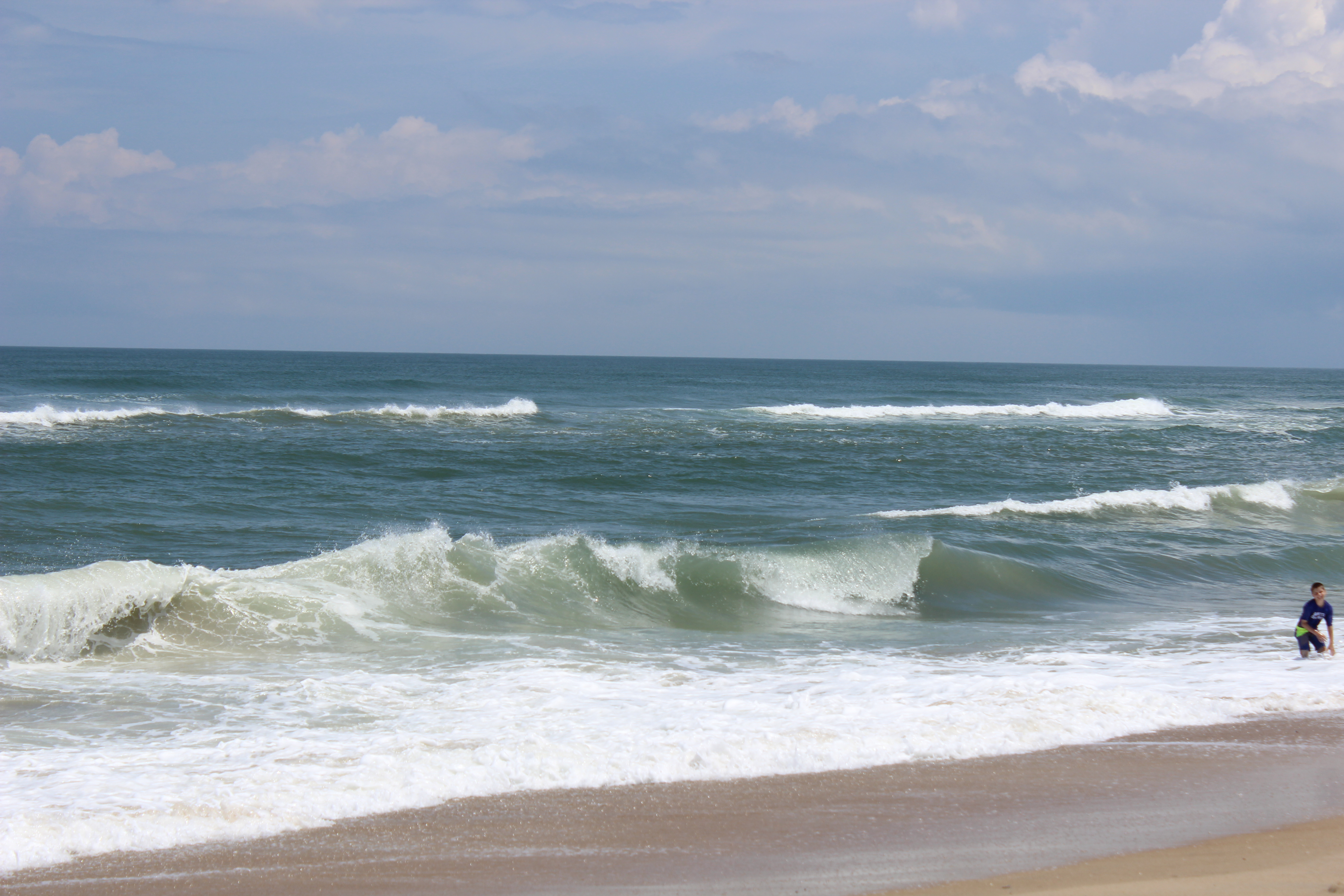
Rip currents and undertows are often confused but are different phenomena. A rip current is a narrow, fast-moving channel of water moving seaward from the shore.
It typically forms when waves break near the shoreline, and excess water is funneled back out to sea. In contrast, an undertow refers to the return flow of water from waves breaking on the shore, pulling swimmers underwater briefly before returning to the sea.
While both can pose dangers to swimmers, rip currents are more hazardous as they can pull swimmers away from the shore with greater force and speed. Understanding the differences between rip currents and undertows can help swimmers recognize and respond appropriately to these hazards when enjoying the beach.
- Formation: Rip currents form perpendicular to the shoreline, pulling water from the shore back out to sea in a concentrated flow. They often occur in breaks between sandbars or near structures like jetties. Undertows, on the other hand, are a result of waves breaking on the shore and the subsequent return flow of water, which can pull swimmers down briefly before returning to the ocean.
- Visibility: Rip currents are often more visible from the beach as they create channels of choppy or discolored water extending offshore. In contrast, undertows may not be as visible and are experienced by swimmers as a sudden pull underwater after a wave breaks.
- Speed and Strength: Rip currents are typically stronger and faster-moving than undertows. They can reach speeds of up to 8 feet per second, which is faster than even the strongest Olympic swimmers. Undertows are generally less forceful but can still pose risks, especially for weaker swimmers.
- Duration: Rip currents can persist for hours or even days, depending on ocean conditions and topography, while undertows are more transient and tend to occur with each breaking wave.
- Hazards: Both rip currents and undertows can be hazardous to swimmers, potentially leading to exhaustion, panic, or even drowning. However, rip currents are responsible for the majority of beach-related fatalities, as they can carry swimmers far from shore into deeper water.
Understanding these distinctions can help beachgoers and swimmers recognize the signs of these hazards and take appropriate precautions to stay safe in the water.
- Yes-H2O molecules are held closer together & can quickly transmit energy (sound waves) through vibration making it more than 4x faster than molecules in the air.
- Water temperature causes Refraction a phenomenon that amplifies sound on the surface of the H2O, both ………………………………………………………. Read more
Caught In a Rip Current
The number one piece of advice anyone gets from safety instructors and lifeguards who deal with Rip Currents daily is:
- Stay Calm- If you get caught in a Rip your actions will typically determine your fate. Panicking in the ocean can cost you your life. Try and relax and calm yourself.
- Conserve your energy. Do not attempt to swim against the current and towards the shore. If you try and fight the current, you will expend your energy which will lead to tragic consequences.
- Stay afloat and hold your hands up to try and get the lifeguard’s attention to signal them for help. If you relax and float people will see you flagging them from shore. Especially if you get too far out.
After that, you have 2 options:
- You can ride the Rip Current in a circular motion and allow it to bring you back to a sandbar or to breaking waves that will push you back to shore. OR
- Ride it out to deep water where the Rip Current will cease to exist. Once out of the current you can wait for rescuers or swim back to shore.
For really strong swimmers, you can swim parallel along the beach to escape the Rip Current. To some research experts on the subject, there is still a question of whether this is the best way of dealing with it. According to NOAA Researchers who study Rip Currents all over the world:
- Swimming Parallel to the beach gives you a 50-50 chance of swimming that you will be struggling against the hazardous current.
- Only 10-20 % of the Rip Currents from these studies all over the world did not return to the shore. The rest moved in a Circle.
These are studies made by Oceanographers from Australia and America who did recent studies all over the world said they are not conclusive and the jury is still out on what exactly to do if you encounter this terrible event.
The number 1 thing that everyone agrees with is not to panic. Take control of the situation and stay afloat without losing the energy that you may need. Know that these Rips are not sizable they all have limits and will stop at some point so you can get out. So Don’t Panic
Conclusion:
You can identify them if you know what to look for and you can deal with them if you know what to do. Use this as a reference with the most important rule Don’t Panic!
Stay Calm
Conserve energy
Don’t swim against the current
Stay afloat
Hold your hands up to signal help
Ride the Current in its natural circular motion to bring you back to a sandbar or waves that push you back to shore.
Or
Ride it out to deep water where the Rip will cease to exist.
Wave to Lifeguards
Rip Current accounts for more than 80% of all Lifeguard rescues. There are ways to recognize them and a few ways of what you can do if you get caught in one. Learn the history of the beach and whether there have been problems with Rip Currents before.
A King Tide is used to describe an especially high tide event occurring twice a year and is caused when there is an alignment of the gravitational pull between the sun and moon. It occurs naturally, & regularly and is predictable when the earth comes closest to the sun around Jan..……………………………………………………………………… Read more
FAQ’s
What is a rip current? A rip current is a powerful, narrow current of water that flows rapidly away from the shore. It typically forms when waves break near the shoreline, creating a channel for water to flow back out to sea.
How do rip currents form? Rip currents often form in breaks between sandbars or near structures like jetties. When waves break near the shoreline, excess water is funneled back out to sea through these channels, creating a rip current.
Are rip currents dangerous? Yes, rip currents can be very dangerous, especially for swimmers who are caught in them. They can quickly pull swimmers away from the shore and into deeper water, making it difficult to return to safety.
How can I identify a rip current? Look for areas where waves aren’t breaking, as rip currents often form in these channels. Additionally, watch for discolored or choppy water, floating debris being pulled seaward, and foam moving away from the shore.
What should I do if I’m caught in a rip current?
- Stay calm and try to swim parallel to the shore to escape the rip current’s pull. Don’t swim against the current directly, as this can lead to exhaustion. Once out of the current, swim diagonally towards the shore. If you’re unable to swim out, float on your back and signal for help.
How can I avoid rip currents? - Swim at beaches with lifeguards present and always follow their instructions. Stay informed about local beach conditions and any posted warnings about rip currents. Avoid swimming in areas where rip currents are present and swim parallel to the shore if you’re caught in one.
Can rip currents be predicted? - While rip currents can’t be predicted with absolute certainty, there are some signs to watch for, such as changes in wave patterns, water color, and the presence of foam or debris moving seaward. Paying attention to these signs can help you identify and avoid rip currents.

